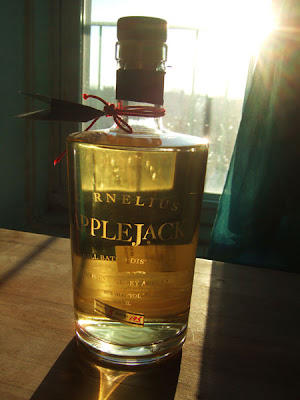 I first made Apple Pan Dowdy way back in July, for the Edible Queens summer issue. Originally part of an article about a traditional Fourth of July dinner, this dish is also perfect for this time of year. Apple usage? High. Simple? Indeed, because the end product is far from glamorous: a sloppy, delicious mess of baked appleness. I could line up testimonials about how good this dessert is; it’s one of the recipes I’ve made this past year that I get requests for again and again.
I first made Apple Pan Dowdy way back in July, for the Edible Queens summer issue. Originally part of an article about a traditional Fourth of July dinner, this dish is also perfect for this time of year. Apple usage? High. Simple? Indeed, because the end product is far from glamorous: a sloppy, delicious mess of baked appleness. I could line up testimonials about how good this dessert is; it’s one of the recipes I’ve made this past year that I get requests for again and again.
You can choose to use either real maple syrup or molasses to sweeten the apples; each adds a distinctive flavor. The molasses has a strong taste, so if you’re a fan of dark sugars and ginger breads, that’s the way to go. But for a lighter finish, the maple syrup delivers a surprisingly clean and gentle flavor.
***
Apple Pan Dowdy
Adapted from American Heritage Cookbook, 1964 and Miss Corson’s Practical American Cookery by Juliet Corson, 1886.
1 9-inch pie crust, store-bought or homemade
5 large baking apples, peeled, cored and cut into ¼-inch-thick slices
½ cup sugar
½ tablespoon freshly squeezed lemon juice
½ teaspoon cinnamon
½ teaspoon salt
¼ teaspoon freshly grated nutmeg
½ cup maple syrup or molasses
¼ cup water
3 tablespoons unsalted butter, melted
1. Preheat oven to 400°F. In large bowl, gently toss together first six ingredients.
2. Use half the crust to line the bottom of an 8- by 11-inch baking dish. Top with apple mixture. In small bowl, whisk together maple syrup, melted butter and water; pour over apples. Cover apples with remaining pie crust by weaving together wide strips, or by simply scattering torn pieces of crust over the top. Bake 10 minutes.
3. Remove from oven and“Dowdy” the crust by pushing it down into the apples with a knife. Reduce heat to 325° and bake one hour more.
4. Serve hot or cold with a dollop of whipped cream.




 I had this Applejack recommended to me by one of the cocktail experts at
I had this Applejack recommended to me by one of the cocktail experts at 








